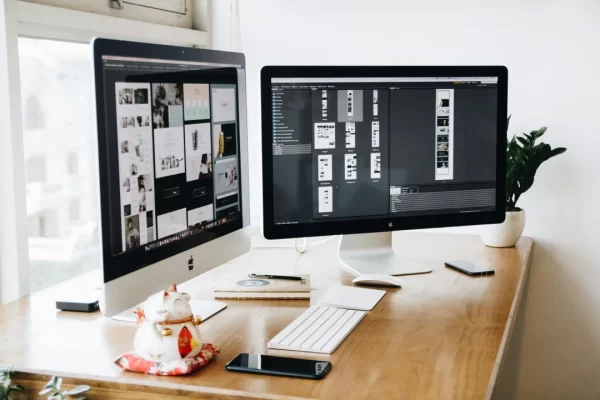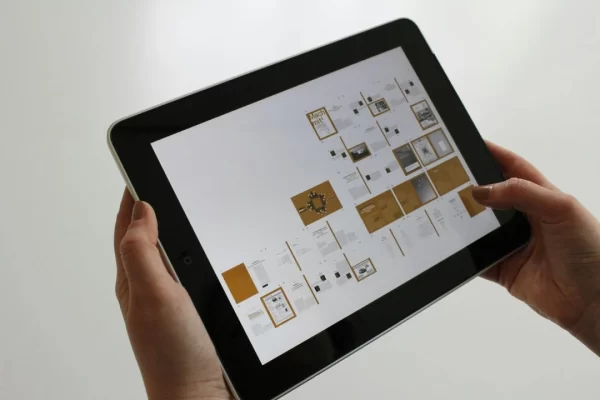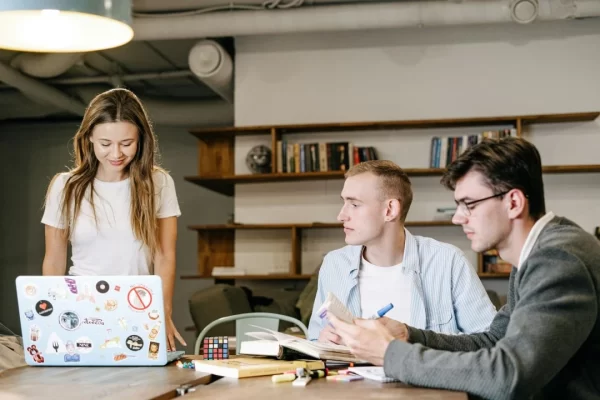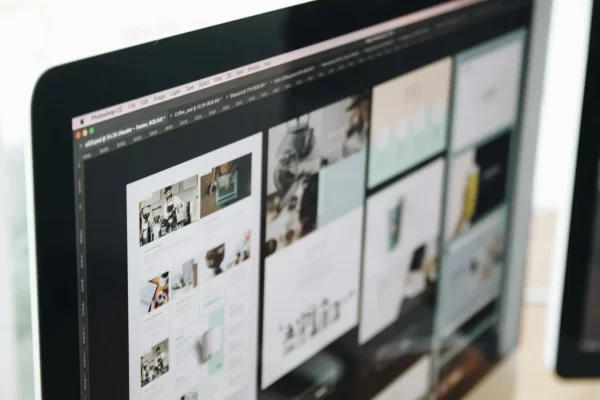Creating or refreshing a website is a major investment in your brand. Whether you’re launching a new business or redesigning your existing online presence, partnering with the right web design agency can make all the difference. But with so many options out there, how do you choose the right one?
In this guide, we’ll show you exactly how to find the best web design agency in Australia — from researching agencies and reviewing portfolios to understanding costs and asking the right questions.
Key Takeaways
- Web design in 2024 is all about realness, usability, and emotional connection.
- Interactive and immersive features like quizzes, AR, and scroll effects boost engagement.
- Accessibility and soft visuals improve UX and SEO.
Table of Contents
- Key Takeaways
- Retro Fonts
- Parallax Scrolling Effects
- Neumorphism
- Abstract Art Compositions
- Relaxing Colour Palettes
- Cause-Driven Web Design
- Scrolling Transformations
- Quizzes and Personalised User Journeys
- Three-Dimensional Colours
- Augmented Reality Experiences
- Minimalism vs. Maximalism
- Vector Graphics
- Black and Pastel Colour Schemes
- Prioritising Web Accessibility
- Gallery Hover Menus
- FAQ
1. Retro Fonts
What Are Retro Fonts?
Retro fonts take inspiration from previous design eras, particularly the 70s, 80s, and 90s. While some vintage styles have become clichéd, designers are reviving retro typography with fresh, modern twists.
Why It’s Trending
They blend nostalgia with innovation and create eye-catching headers that stand out in a sea of minimalism.
SEO Benefits
Retro fonts enhance brand personality and make pages more memorable, improving bounce rates and engagement.
2. Parallax Scrolling Effects
What Is It?
Parallax scrolling creates a 3D-like effect by making background elements move slower than those in the foreground.
Why It’s Trending
It adds depth and visual storytelling, creating a more immersive browsing experience.
SEO Benefits
Encourages longer session durations and keeps users engaged, signalling positive user behaviour to search engines.
3. Neumorphism
What Is Neumorphism?
Neumorphism combines flat design and skeuomorphism to create soft, extruded shapes that mimic physicality.
Key Applications
- Buttons
- Input fields
- Cards and panels
Why It’s Trending
It adds tactile, intuitive interaction without clutter, making interfaces feel more realistic.
4. Abstract Art Compositions
What Is It?
Geometric and free-form shapes are used in place of stock photography or illustrations.
Why It’s Trending
It allows more creative freedom while still maintaining professionalism and emotion.
SEO Benefits
Abstract visuals load faster than photo-heavy designs and can still evoke emotions.
5. Relaxing Colour Palettes
What Are They?
Soft, nature-inspired shades like pastel blues, sage greens, and warm browns.
Why It’s Trending
These colours reduce eye strain and create a calm user experience — perfect for long screen time.
SEO Benefits
Increases time on site and reduces bounce by improving visual comfort.
6. Cause-Driven Web Design
What Is It?
Designing websites with a focus on social impact, such as environmental causes, diversity, or inclusion.
Key Features
- Real customer imagery
- Impact stats
- CSR stories
Why It’s Trending
Post-pandemic, consumers are looking to support brands with shared values.
7. Scrolling Transformations
What Are They?
Interactive animations or design changes triggered as users scroll through a page.
Why It’s Trending
It elevates storytelling and keeps users interacting with the content.
Use Cases
- Product showcases
- Explainer content
- Data visualisation
8. Quizzes and Personalised User Journeys
What Are They?
Interactive onboarding tools that ask questions to personalise product or content suggestions.
Why It’s Trending
Users want curated experiences. These tools make them feel seen and catered to.
SEO Benefits
Reduces friction in navigation and increases conversions.
9. Three-Dimensional Colours
What Are They?
Gradients and colour blends enhanced with subtle shadows and highlights that mimic real-world lighting.
Where It’s Used
- Icons
- Buttons
- Backgrounds
Why It’s Trending
It brings a new level of realism without sacrificing load speed.
10. Augmented Reality Experiences
What Is AR in Web Design?
Web-based AR allows users to visualise products or environments through interactive, real-time experiences.
Why It’s Trending
It reduces the gap between virtual and real-life shopping or exploration.
Use Cases
- eCommerce product trials
- Virtual tours
- Training simulations
11. Minimalism vs. Maximalism
What Is Minimalism?
Design that uses negative space, limited colours, and simple typography for a clean experience.
What Is Maximalism?
A bold, expressive approach that layers colour, texture, and typography to make a statement.
Why They Coexist
Designers are balancing clarity with creativity, using both approaches where appropriate.
12. Vector Graphics
What Are Vector Graphics?
Scalable images (SVG files) that maintain quality across all screen sizes and devices.
Why It’s Trending
They’re lightweight, fast-loading, and ideal for responsive design.
SEO Benefits
Improved site speed, mobile-friendliness, and high-quality visuals.
13. Black and Pastel Colour Schemes
What Are They?
High-contrast black palettes and soft pastel colours being used either separately or in combination.
Why It’s Trending
These schemes convey both calm and sophistication, suitable for various brands.
SEO Benefits
Improved readability and accessibility — essential for both users and search engines.
14. Prioritising Web Accessibility
What Is Web Accessibility?
Design practices that ensure websites are usable by people with disabilities.
Key Features
- Alt text
- Keyboard navigation
- High contrast colours
Why It’s Trending
It’s not only inclusive — it improves UX, SEO, and is often legally required.
15. Gallery Hover Menus
What Are They?
Interactive gallery menus that reveal product previews or descriptions when hovered over.
Why It’s Trending
They create a tactile, real-life shopping feel and improve product exploration.
Use Cases
- Fashion and retail
- Portfolios
- Home décor websites
FAQs
What is the biggest web design trend right now?
Parallax scrolling and immersive onboarding experiences are among the top trends, enhancing visual storytelling and user engagement.
Why is accessibility important in web design?
Accessibility ensures your site is usable by everyone, including those with disabilities — it’s inclusive and improves SEO.
How do I know if a trend is right for my website?
Consider your brand, audience, and goals. Trends should enhance — not overwhelm — your user experience.
Final Thoughts
Modern web design is shifting away from futuristic gimmicks and focusing more on comfort, interactivity, and inclusivity. This year’s trends mirror the way people live — digitally connected, socially aware, and craving meaningful experiences.
Whether you’re building an eCommerce store, a service site, or a portfolio, prioritising these trends can improve engagement, conversions, and search engine rankings.
Looking to elevate your website with the latest design features? Let’s chat. We build modern websites that are not only beautiful but optimised for performance, accessibility, and SEO.
Wrap Up
Finally, the top 2021 web design trends resemble real design we would see in daily life rather than design from a sci-fi film. In the end, it only goes to demonstrate how ubiquitous websites have become in our lives and how the designers of 2021 are bringing them down to earth.
Cultural shifts occurring all around the world have a major impact on design trends in Australia. This year has witnessed tremendous progress in the area of digital design.
COVID-19 has isolated us, forcing us to enter the digital world and changing our way of life. Because of the remote, stay-at-home lifestyle, designers have been compelled to recreate real-life events and make them accessible online.
Whatever your company, you should follow the golden rules of website design: make it simple to use, visually pleasing, and contain all essential information to communicate your brand, your story and your unique offering. Above all, bear in mind that the process of designing your website should be inspiring.
If you’re interested in a modern website design that is both functional and easy on the eyes, give us a call. As a web design agency with more than a decade of industry experience under our belt, we know what web design trends work best for your brand.



